Over the last decade, injury risk assessment has become a major challenge for many pro teams and leagues. For example, as shown in the graph below, among US sports leagues, the cost of injuries has skyrocketed over the years and totaled $700M and $500M for the MLB and NFL, respectively, in 2017. This is why pro teams and leagues are now investing heavily on advanced solutions in order to try to help reduce this cost which is impacting their top line, and results.
Picture: Upside Global, 2022.
Looking at the cost of injuries globally, soccer is currently the sports that is the most impact by injuries. As shown in the graph below, injuries have cost $6.2B across all the soccer teams in 2015. The second most impacted sports is baseball with a total of $3.3B in terms of cost of injuries. Just to put things into perspective, in Europe, it costs $600,000 per month per player for major European soccer teams to cover the cost of injuries. This typically includes the cost of salaries, medical procedures and the insurance cost.
Source: Upside Global, 2022.
On the technology front, we are now seeing the emergence of advanced solutions (e.g. wearables and AI/analytics, EMG sensors, thermography, etc) and algorithms capable of predicting the risk of injuries with high level of accuracy. This is having a profound impact on pro teams in terms of players’ monitoring, recovery or injury prevention.
In this analysis, we’ll provide an overview of the current and future trends, the injury prevention solutions segments, and the key players. We will also provide recommendations to teams and leagues on how to successfully implement an injury prevention solution.
Assessing the risk of injuries need to take into consideration various inputs and factors.
Alessio Rossi, PhD, Department of Computer Science, University of Pisa, wrote an interesting research paper on injury risk injury.
In the last decade, several papers proposed models to assess athletes’ injury risk. The first injury risk model was developed by Gabbett and colleagues in 2010 [6], who modeled the risk of soft-tissue injury using a monodimensional approach. This risk was estimated through the evaluation of the training load (i.e., the cumulative amount of stress perceived by a player during a single training session) sustained by the athletes during a competitive season. In this study, the authors suggested that soccer players performing a high training workload were 70% more likely to get injured compared to players that were subjected to low training workload. Furthermore, Gabbett, Hulin, and colleagues in the last decade have continued their study by detecting a link between acute training load (i.e., the mean of training load of about one previous week) and injury risk [7,8,9,10]. Essentially, these studies suggested that large increases in acute workload with respect to the chronic workload (i.e., the average training workload of the previous month) are associated with increased injury risk in elite cricket fast bowlers and rugby players. In particular, they showed that players with a high ratio between acute and chronic workload (ACWR 2, i.e., training workload in the last week being 200% higher than the effort that the players used to perform in the last month) are more likely to become injured compared to those with a lower ratio. In particular, they demonstrated that ACWR provides better insights about injury risk than the absolute workload.
In his study, several types of data were assessed to predict injuries. As provided in Figure 1 (pink leaves), two main categories were used as input features to predict injuries: (i) Training workload features, and (ii) players’ psychophysiological assessment features. Moreover, the red leaf in Figure 1 provides the label for the injury prediction model. The label refers to the output variable that the machine learning models try to predict.
In this section, the study describes in depth all of these features (i.e., input and label features). and we also provide data preprocessing approach that could be useful to quantify the players’ history. Finally, we describe how to set the injury label to better train the machine learning models.
Figure 1. Diagram of the injury forecasting validation. The pink leaves (i.e., psychophysiological assessment and training workload) refer to the input variables for the injury prediction algorithm. The red leaf is injury information used to label each training vector. Orange leaves are the models trained and tested by the injury prediction algorithm. Each of these three leaf types (pink, red, and orange) are useful for building the injury prediction algorithm. Furthermore, blue leaves describe how to train, validate, and test the model developed by the injury prediction algorithm. Moreover, green leaves list all the metrics to assess the model’s goodness. Finally, gray leaves describe the data preprocessing in each injury prediction algorithm stage.
Figure 1. Diagram of the injury forecasting validation.
Training Workloads
It is possible to define two different types of training workloads: external, and internal (Figure 1).
External Workload
External workloads are defined as the training features that describe the effort performed during training or match sessions. Global Position System (GPS) commonly records such features. It is currently the most used system to track the movement of the players reporting information about three main workload features types [15]:
- kinematic: player’s overall movement during a training session, e.g., total distance and high-speed running distance (Distance in meters covered above 5.5 m/s);
- metabolic: energy expenditure of a player’s overall movement during a training session, e.g., high metabolic load distance (distance in meters covered by a player with a Metabolic Power is above 25.5 W/Kg);
- mechanical: player’s overall muscular-scheletrical load during a training session, e.g., explosive distance (Distance in meters covered above 25.5 W/Kg and below 19.8 Km/h), and the number of accelerations and decelerations above 2 and 3 m/s2.
These features are the most used to evaluate external workloads and to predict the risk of injury [19]. The accuracy of the data is affected by the GPS sampling rate. The most used GPS devices in soccer vary between 5 and 20 Hz, resulting in an error rate during acceleration, deceleration, and constant motion of approximately 3.1–11.3% and 1.9–6.0%, respectively [26]. Moreover, 1 Hz and 5 Hz GPS devices also show a consistent error when estimating distance during high-intensity running, velocity measures, and short linear running (particularly when this involves changes of direction) [26]. These errors could induce a possible under-/over- estimation of the external workloads. However, the higher the GPS sample rate, the higher the accuracy of the workloads metrics is. Despite this limitation, GPS seems to provide reliable data during team sports movements. In particular, 10 Hz and 15 Hz GPSs seem to be the most valid and reliable devices among linear and team sport simulated running [27]. Finally, one of the most important issues in metrics derived from GPS devices is that they provide many external workload features that are often related to each other. This aspect could result in a problem of multicollinearity that could negatively affect the prediction ability of the machine learning model. The accurate selection of the external workload features is a critical aspect not only for injury forecasting models, but also for every machine learning model. Hence, a feature selection process is required to solve this issue. This approach permits to diminish the number of input variables to reduce the computational cost of modeling, improve the performance of the model, and simplify the model interpretation. This approach is described in more depth below in the Section regarding Feature Selection.
Internal Workload
Internal training workload is usually assessed by evaluating the players’ Rate of Perceived Exertion (RPE). RPE is a self-reported scale describing the effort perceived by a player during a physical activity [28]. Two different RPE scales are used in sports: (i) CR-10 where the RPE values are ranged between 0 (no exertion at all) and 10 (maximal exertion), and (ii) 6–20 scale where the values are ranged between 6 (no exertion at all) and 20 (maximal exertion). The product between RPE (CR-10) and the total time of the training/match session is called Training Load (TL) [29]. TL is widely used in sports as an easy index describing the players’ internal workload. In particular, previous studies showed that TL is a valid method to estimate internal workload, highlighting the fact that this index is strictly related to the players’ physiological responses to training stimuli (e.g., oxygen consumption and heart rate) [29] and to external workloads of previous days that are found to be linked to players’ fatigue [30].
Another important feature describing the internal workload is heart rate (HR). Even if HR is an important objective index of internal load, the use of heart rate monitoring is not a standardized procedure in soccer teams due to the fact that the chest strap is uncomfortable while performing contact sports [31]. HR data recorded during training and matches are found to be strictly linked to energy expenditure, oxygen consumption, and maximal oxygen consumption, and consequently to internal workload [31,32]. However, even if HR accurately reflects the cardiovascular response to external stimuli, no paper has included this index in injury prediction tasks, probably due to the difficulty in recording it during training and competitions.
Psycho-Physiological Assessment
Psycho-physiological data includes body composition information, cardiopulmonary assessments, injury history, neuromuscular assessments, players’ profile, players’ statistics, and psychological assessments [33]. In fact, several studies have found that individuals’ factors such as increased age [34], career duration [34,35], and previous injury [36,37] are related to the risk of injuries. Additionally, joint mechanical instability, general joint laxity, or functional instability are others factors affecting players’ injury risk [33,34]. Similarly, lack of training [35] or playing on a hard surface [33,38] also appear to increase the injury risk. Therefore, the combination of training workloads and psycho-physiological features allows for a complete overview of the players’ health status that might increase the accuracy of the machine learning models on injury prediction. In this section, we will provide a few examples of individual characteristics that could be used as an input variable for the injury prediction models.
Player Profile, Body Composition and Physical Assessment
Age, body weight, height, and the Body Mass Index (BMI) are common players’ characteristics used to develop models for injury prediction [15,20,21,22,23,24,25]. Moreover, human morphology—i.e., players’ bioimpedance parameters in both whole body and regional dimensions—could affect players’ injury risk. It is well known that morphology features (e.g., skeletal muscle mass) are related to force, power, sports performance, and oxygen uptake [39,40,41], and they are usually used to monitor rehabilitation phases [42]. These factors could be used to profile players in order to personalize the injuries prediction rules.
Additionally, physical tests (e.g., power, strength, and resistance) are widely used in soccer, and sports in general, to assess athletes’ physical status. Jump, sprint on 10 and 20 m, Change Of Direction (COD), and YoYo tests are only a few examples of all the tests performed on sport fields [43,44]. Moreover, neuromuscular assessment (e.g., core stability, joints range of motion, isokinetic joints flexion and extension strength, and Functional Movement Screen) are other evaluation tests that allow for the assessment the stability and mobility of the joints that are found to be linked to the injury risk [20,23,45,46].
The recent literature validates the use of infrared thermography for injury prevention due to its ability to detect skeletal muscle overload and fatigue in athletes [47]. After physical activity, athletes are exposed to physical stress that induces a change in blood flow profusion influencing skin temperature. The thermal asymmetry was found to be a potential index of injury risk related to training overload [47,48]. This non-invasive and fast technique might be every day used to assess the athlete’s muscle status. Moreover, creatine phosphokinase (CPK) and interleukin 6 (IL6) are two blood serum markers that indicate acute muscle damage and consequently provide a risk of injury [49,50]. Physical activity induces muscle damage that is accompanied by transient muscle strength loss, and an increase of muscle soreness [49,50,51]. Hence, these markers could help to better understand the muscle response to external stimuli helping to assess the injury risk.
Due to the difficulty of recording some of this information on a daily routine, they could be used to profile players over a specific time span in order to assess changes in individual characteristics that could affect injury risk. In this section, we have provided only a few examples of all the features that could be collected and inserted as input features in an injury forecaster.
Injury History
The players’ injury history is an important feature for injury forecasting [52]. The number of previous injuries is found to be related to the risk of injuries [15,53]. As a matter of fact, in injury forecasting models provided in recent papers, previous injury has been identified as one of the primary risk factors affecting injuries [15,20,21,23]. As a matter of fact, re-injuries of joints or muscles have been found to be induced by the fact that the players are not fully structurally and/or functionally restored from previous injuries [54]. In addition to the mere number of the previous injuries, Rossi and colleagues [15] highlight the fact that the distance to the day when the players return to the normal training routine is a factor that helps to predict injuries. In particular, in this study, the authors found that the players that are recently returned to regular training routines are more likely to incur in a new injury.
Self-Reported Wellness
Currently, the use of non-invasive and low-cost tools to monitor players’ status has become a suitable method of assessing players’ response to training and matches stimuli. For example, Perri and colleagues [55] investigate the relationship between wellness and Internal Training Load in Soccer detecting that the internal training workload is strongly related to the players’ wellness status of the next day. Moreover, other studies show that self-reported muscle soreness, sleep duration, sleep quality, and general wellness are also sensitive to TL variations in both Australian Football, English Premier Leagues and volleyball players [56,57,58].
Several questionnaires are used in sports to evaluate players’ well-being:
- Wellness Questionnaire (WELQUE) [59,60]: a 5-point Likert scale of 5 items (i.e., fatigue, sleep, soreness, stress, and mood), where 1 and 5 indicated the highest and lowest values of wellness for each item, respectively.
- Profile of Mood States (POMS) [61]: the primary psychological tool for monitoring training stress and over-training syndrome. The original questionnaire is composed of 65 items, but a short version with a subset of questions (i.e., tension-anxiety, depression-dejection, anger-hostility, fatigue-inertia, vigour-activity, and confusion-bewilderment) are widely used for assessing mood states among athletes [62]. For this inventory, the athletes report a 5-points Likert scale to rate how strongly they agreed with a statement.
- Daily Analyses of Life Demands for Athletes (DALDA) [63]: a self-reported questionnaire used to assess life-stress and symptoms of stress in athlete’s response to training. DALDA is divided into two sections: (i) self-assessment concerning the general stress sources that occur in the everyday life of an athlete, and (ii) determine what stress-reaction symptoms physically exist in the athlete.
- Total Quality Recovery (TQR) [64]: a self-reported scale ranged between 6 and 20 in order to evaluate the self-reported recovery status from a previous effort. Values of about 6 refer to no recovery at all, while 20 means that the athlete fully recover.
- Recovery-Stress Questionnaire for Athletes (RESTQ) [65]: this measures the frequency of current stress symptoms along with the frequency of recovery-associated activities. seven stress scales and five recovery scales characterized the RESTQ version for athletes.
Wearable Devices
Thanks to the technological revolution of the last decade, the use of wrist-worn devices (e.g., Apple Watch, Fit Bit, Garmin, and Polar) equipped with heart rate sensors are becoming extremely popular in sports [66]. These devices allow for a complete and objective overview of the users’ health status by passively recording semi-continuous heart rate, heart rate variability, blood oxygenation, steps, sedentary behaviours, and sleep quality. The recent literature validate the data provided by wrist-worn devices, establishing the profile error of the heart rate (HR) and heart rate variability (HRV) measurements [67,68,69,70,71]. Therefore, these devices allow for the objective and passive evaluate the well-being and recovery status of players in order to produce a potential index of injury risk. However, even if the use of this monitoring technology permits runners to run further and more frequently than those who did not use monitoring technologies, the use of these devices does not appear to be beneficial for injury incidence reduction [72].
Data Preprocessing
Data preprocessing allows for aggregation of time series data in order to provide more details about players’ training workloads history. In particular, several approaches have been used in sports and data sciences to aggregate individuals’ workloads:
Cost of the “amateur” contact sports injuries could exceed $20B a year as compared to non-contact sports.
As reported by the New York Times, the authors’ findings estimate the price of contact sports injuries—from football, wrestling, basketball, and soccer—could exceed $20 billion a year as compared to non-contact sports—like baseball, tennis, and track and field. Additionally, the paper concludes that if the rules for contact sports changed to become non-contact, total injuries each year for high school and college men would decrease by more than 650,000.
High school sports accounted for the largest contribution to both cost and injury rate, which the authors point out, is because opportunities to play are significantly higher at the lower level.
The paper estimates high school contact sports are responsible for up to $19.2 billion yearly and 600,000 more annual injuries.
Average team in English Premier League pays $12M in wages to players who are unavailable for selection due to injury. Resulting loss of league points contributes another $48M in lost potential incomes.
In professional sport, the amounts spent on wages lost when players are unavailable for selection justify employing a whole army of injury prevention experts!
As an example, an average team in the English Premier League pays an estimated $12M in wages to players who are unavailable for selection due to injury over the course of one season(12). In addition, the resulting loss of league points contributes another $48M in lost potential income(12). Similar results are evident across other professional sports leagues (see figure 3). While injuries in amateur sport do not result in wasted salary payments, personal cost can be high. An organization sponsoring multiple teams (schools, universities, clubs) could provide tangible benefits to their members if they employed a sports injury prevention professional.
Picture: Financial losses and games lost due to injury
Some pro teams are better at assessing the risk of injuries than others
We have been working with pro teams for the past 10 years. We believe that some pro teams are better at preventing injuries than others. This might be due to several factors. Some of these teams use specific tools (software, sensors, advanced thermographic cameras..) and/or have very experienced sports performance professionals. One major European soccer team once told us that they managed to reduce injuries by -35% over the past 3-4 years. We will not get into details here but the point here is that not all teams are equal when it comes to injury prevention. Preventing injuries is very complex and there are so many factors (load, nutrition, climate/humidity/heat, mental health…) that can impact players’ injuries.
Many companies claim they can predict injuries. Many companies are now taking a more conservative stand.
Over the past 10 years we have seen a large amount of companies claiming that they can accurately predict injuries. These companies are using various technologies in order to do that. Some companies claim that have the ability to predict the types of injuries (e.g. knee, etc.) and can provide recommendations for each player (e.g. the player should not exceed more than 20 miles per hour in the next workout, or the player should run 3 km max ..).
Now there are still some skeptics out there especially in the world of elite sports. In fact when we speak to sports performance directors, Athletic trainers of major teams, some of them will not be shy to tell us “There are no companies in the world who can claim to accurately predict injuries. None”. On the other end there is a growing number of companies who have adopted a much more conservative stand on injury prevention and openly claim that “they cannot predict injuries”. Instead they can equip athletic training staff with tools to help them “potentially” detect early signs of injuries, understand the baseline of each player so that when a player goes out of his/her normal range, the coach/athletic trainer can flag potential risks of injuries with a particular player. In our opinion, this is a much more reasonable approach because during a game anything can happen which can result into athletes’ injuries.
New types of solutions emerging from EMG sensors, AI solutions.. to thermography
Over the past few years we have seen the emergence of new types of solutions and technologies that teams have used to try to prevent potential injuries. These technologies can go from thermography (software + advanced cameras), AI based solutions, EMG based sensor solutions, 3D motion detection, or hydration/electrolyte assessment tools. The list goes on and on.
Now those technologies are not perfect and they have their pros and cons. The cost can sometimes vary greatly from one technology to another. We will do a deeper dive on this into the upcoming sections (Ecosystem section, vendor profiles..). We believe that in the next 5 years we will see the emergence of new types of injury prevention solutions that will be more capable and advanced in ways that we have never seen before. This will be made possible due to continued improvements in the world of AI, analytics, biosensing, algorithms and so on.
Solutions that can understand players’ baseline is key
We believe that of all the solutions out there that claim to help prevent injuries, the solutions that can understand the baseline of each player are the ones that stand out. Now this can be done through advanced algorithms. The other key element of the equation is to have enough historical data (3 years+) on the players.
To that point, we were recently talking to a highly experienced sports performance exec who told us that one time he was able to understand why a particular player kept getting injured. Initially the coach could not understand why this world’s class player was getting injured then once he was able to get historical data on that players (over 5 years of data) he was able to understand why this particular player was getting injured. Basically every time this player was going beyond his typical range (e.g. distance ran) the player would get injured. Initially they could not see such patent because the data was only for a few years.
In our opinion, with some exceptions, many solutions fall short there as they do not have enough historical data on the players and/or they do not understand the baseline of each player because the algorithms and models that they built are not tailored to each player meaning that what might be beyond a norm for one player may be within the norm for another player. Customization of the algorithm is key to build successfully injury prevention tools.
Injury risk assessment solutions ecosystem
Let’s start by defining the key segments of the injury risk assessment ecosystem:
A. Internal load assessment tools:
(1) EMG sensors vendors: This typically includes companies that build EMG sensors capable of measuring muscle fatigue, muscle load, and many other parameters. Companies that fall into this categories are companies like Neurocess, Athos, Myontec, Strive, just to name a few. It sometimes require to wear a short (Athos, Myontec, Strive) but some other vendors like Neurocess have built EMG sensors that do not require to wear any shorts and can be applied directly on the skin.
(2) AI based solution vendors: This typically includes companies that build AI based platforms with advanced algorithms. Companies like Zone 7 (AI based solution) fall into this category. Some of those AI software can be quite sophisticated. For example, Zone 7 software understands the baseline of each player, can predict specific types of injuries (knee, etc..) and can provide recommendations for each player (e.g. do not exceed more than 20 miles per hour in next drill, or run 3 km max ..).
(3) AMS vendors: This category includes companies which provide software enabling teams to manage player’s data (GPS data, biometric data, fatigue…). Key players in the space include companies like Sportgo, Apollo, Kitman labs, Kinduct, Fusion Sport, CoachMePlus, Rock Daisy, Yguara, Edge10, Soccer System Pro, Myagonism, Benchmark54, MyCoach, SAP, Train My Athlete, Iterpro, ProSoccerData, Athlyts, Soccer Bi3, Monilabb, TopSportsLab, SoccerLab, or Mobii. You can check out our full AMS vendors analysis here.
(4) Thermography solution vendors: This typically includes companies that built Thermography solutions (advanced camera + software). Companies like ThermoHuman fall into this category. Companies like ThermoHuman, which is based on the analysis of temperature, have built metrics mainly based on asymmetries and help teams reduce muscle injuries and quantify internal load. Another key vendor in this category is OmniAthlete.
(5) Advanced biosensors vendors: This typically includes companies that built advanced biosensors available in various shapes and forms (e.g. smart patches, arm bands, etc.) that can measure biomarkers (sweat, hydration/electrolyte, lactate, etc..) and can be early indicators of potential injuries. Companies like Flowbio, Kenzen, Nix, Intake.health, Bisu, just to name a few, fall into this category.
B. External load assessment tools:
(6) GPS vendors: Typically those include companies manufacturing outdoor GPS systems. It includes vendors such as Catapult, STATSports, WIMU, McLloyd, SPT, Polar, Q-Track, Titan, Gpexe, VX Sport, FieldWiz/ASI, Johan Sports, among others.
(7) Biomechanics (Motion tracking..): Typically those include companies that offer 3D motion tracking technology and products that can be used for health & sports performance purposes to help teams assess risk of injuries. Xsens, OptiTrack, NDI, Motion Analysis, Vicon, Qualisys, just to name a few.
Picture: Upside Global, February 2022
Key Injury Risk Assessment Solutions vendors
- Zone7
Founded: 2017
HQ: Palo Alto, CA
Amount money raised: $10.5M
Sector: AI based injury prevention tool
Website: https://zone7.ai/
Investors: Blumberg Capital, Resolute Ventures, UpWest, PLG Ventures and Joyance Partners.
Total employees: 43
Customers / partners: Hull City, Rangers FC, Celtic FC, QPR, Valencia CF, LA FC. Zone7 is also deployed live across the Premier League.
Company/product description: Zone7 helps athletes, coaches and medical professionals bridge the gap between maximum performance and avoiding injury. Zone7 use AI-driven pattern recognition to predict injuries and simulate how changes in training and working impact performance and injuries. Data is collected from wearables, medical profiles and physio & screening products to ensure the utmost accuracy and trust.
- Kitman Labs
Founded: 2012
Amount money raised: $80M
Sector: AI based injury prevention tool
Website: https://www.kitmanlabs.com
Investors: Kitman Labs has raised a total of $82M (our most recent round was $52M) in funding over 9 rounds. Their latest funding was raised on Nov 4, 2021 from a Series C round. Kitman Labs is funded by 7 investors. Guggenheim Investments and QVIDTVM are the most recent investors. Kitman Labs has acquired 2 organizations. Their most recent acquisition was Presagia Sports on Jul 14, 2021.
Total employees: 120
Customers / partners: Over 700 elite teams across the NFL, NHL, MLB, NCAA, English Premier League, La Liga, Serie A Bundesliga, Pro14, Premiership Rugby, and Japan’s Top League use the company’s technology. Some of their customers include teams such as the LA Galaxy (MLS), Toronto FC (MLS), Chelsea FC, Everton FC (Premier League), Saracens, New Jersey Devils, University of Colorado, Baylor University, Cubs (MLB), just to name a few.
Company/product description: Kitman Labs is the Intelligence Platform provider for elite sports teams around the flob. Founded in 2012 with the vision to fundamentally change how the industry uses data to improve performance, health, youth development, and talent strategy, the company has invested tens of millions of dollars to created a modern operating system and advanced analytics that are tailored for each organization based on their unique goals, culture, data, and approach to sport. Teams use their Intelligence Platform to consolidate data, build up shared processes that use analytics-driven shared intelligence, and establish collaborative decision making across all departments. With over 100 Performance Experts with backgrounds in coaching, medical, sports science, and data science, Kitman Labs provides unparalleled expertise and support to accelerate each customer’s path to success.
- Neurocess
Founded: 2018
HQ: London (England, UK)
Amount money raised: $3.4M. Raising another $5M as part of their next round of funding.
Sector: sEMG sensor for injury prevention and training optimization.
Website: https://www.neurocess.co/
Investors: SOSV/HAX, Growth Circuit.
Total employees: 10
Customers / partners: Leading Premier league soccer clubs, and Turkish soccer clubs and UK rugby teams.
Company/product description: Founded in 2018, Neurocess offers services as a wearable technology product that increases the training performance and reduces the risk of injury. Its product provides a sports activity analysis platform through a wireless EMG-based sensor network optimized for athletes. The developed bio-sensors is assisted by advanced signal processing methods to capture physiological data from the muscles accurately. They are using the electrical signals to extract important physiological and biomechanical features such as localized muscular strength, force, fatigue level, dehydration, conductivity, muscular stiffness, muscle recruitment with respect to time. They are analyzing this necessary physiological information with cutting-edge machine learning methods to gain insight into neuromuscular improvements, training efficiency, athletic form and injury risks.
- Strive
Founded: 2016
HQ: Bothell, Washington (USA)
Amount money raised: TND
Sector: Sensor-based performance optimization, injury prevention, and rehab tool
Website: http://strive.tech
Investors: TBD
Total employees: 25
Customers / partners: NFL’s Baltimore Ravens and Kansas City Chiefs, MLS’s Orlando City SC, English Premier League’s Leicester City and Manchester City, the University of Kentucky men’s basketball program and the U.S. Air Force, use Strive system.
Company/product description: STRIVE delivers the only data platform proven to optimize muscle performance for elite athletes and teams. Through proprietary algorithms and sensors that seamlessly integrate into any compression clothing, STRIVE provides the most complete, accurate and actionable data for athletes to always compete at peak performance.
- Myontec
Founded: 2008
HQ: Kuopio, Finland
Amount money raised: TBD
Website: http://www.myontec.com
Investors: TBD
Total employees: 15
Customers / partners: FIFA, FC Barcelona (Laliga), Everton FC (Premier League), FC Brugge (Belgian Soccer league), UCI, English Institute of Sport, Italian soccer team, FC Bologna FC (Serie A), Red Bull, Herta Berlin FC (Bundesliga), just to name a few.
Company/product description: Myontec designs smart clothing that measures muscles activity, and, along with a phone apps and Muscle Monitor software, they offer customers a new dimension in understanding their muscles behavior while working or doing exercises. Myontec is committed with innovation and they work to make their customers to be healthier, to understand better their body and to perform better. Thanks to Mbody, teams have access to information such as muscle load, performance technique, muscle balance, the efficiency and intensity of muscle work.
- Athos
Founded: 2012
HQ: Redwood City, CA
Amount money raised: $51M
Website: http://www.liveathos.com
Investors: Chamath Palihapitiya, MAS Holdings, Lightspeed Venture, Felix Capital, True Ventures, Partners, DCM and the Golden State Warriors managing partner Joe Lacob.
Total employees: 58
Customers / partners: US Military, Pro teams (TBD)
Company/product description: Athos was created to Build Better Athletes* and they believe everyone with a body is an athlete. Since their founding, they set out to leverage surface electromyography (sEMG) in a wearable form factor to track movement and muscular function anywhere the body is in motion. Going from failed experiments, to successful innovations and granted patents, we’ve since helped thousands of athletes – from professionals in all the major sports leagues and elite collegiate programs, to warfighters in multiple branches of the U.S. military to individuals looking to get more from their workouts.
- ThermoHuman
Founded: 2011
HQ: Madrid (Spain)
Amount money raised: Self funded
Website: http://www.thermohuman.com
Investors: None
Total employees: 10
Customers / partners: New York Knicks (NBA), Inter Miami FC (MLS), Orlando City (MLS), FC Barcelona (LaLiga), VfL Wolfsburg (Bundesliga), Mexican Football Federation or Panathinaikos BC (Greece).
Company/product description: ThermoHuman is a pioneer company specialized in the application of Infrared Thermography for injury prevention/monitoring and internal load quantification. Fast, non-invasive and objective skin temperature measurement. For that, we provide thermal cameras, training and our unique software using computer vision algorithms and AI to help sport and health professionals to better understand thermal physiology and to provide better decision making. 12 years of experience, 52 scientific articles published and customers in more than 30 countries.
- Flowbio
Founded: 2020
HQ: New York, NY
Amount of money raised: Raised $2M to date (currently raising their $3M seed).
Website: http://www.flowbio.com
Investors: HAX/SOSV, EF, Possible Ventures
Total employees: 9
Customers / partners: Undisclosed
Company/product description: FLOWBIO is developing the world’s first real-time sweat sensing platform. Their product, the FLOWPATCH is unlocking the next generation of human performance data starting with total body fluid and electrolyte loss. The FLOWPATCH consists of a single-use sensor (to ensure maximum accuracy of data) and reusable electronics, which analyses the signals coming from the sensors and processes + streams the data and hydration recommendations to a smart-watch, bike computer or phone.
- Kenzen
Founded: 2016
HQ: Kansas City , MO
Amount money raised: $5M
Website: https://kenzen.com/
Investors: Digitalis, Flex (formerly Flextronics), the San Francisco 49ers, Hickory Ventures, Gaingels, and the Women’s Capital Connection.
Total employees: 26
Customers / partners: TBD
Company/product description: Kenzen is a NY based wearable startup that built a smart patch capable of measuring in “real time” HR, CBT (Core Body Temperature), and activity. What is also unique about Kenzen solution is that the system is capable of understanding the “baseline” (norm) for each individual based on a proprietary solution. Kenzen is at the intersection of climate tech and unparalleled heat science. They harness physiology data to prevent heat injury and death on worksites, one of the foundational issues of our time.
- Nix
Founded: 2015
HQ: Boston, MA
Amount money raised: $3M
Website: http://nixbiosensors.com
Investors: Oregon Sports Angels
Total employees: 19
Customers / partners: TBD
Company/product description: Nix is taking the guessing out of hydration. Nix’s single-use sensor provides real-time, personal hydration status for the 60+ million athletes who are currently guessing at their fluid needs during training and competition. Studies show that athletes guess incorrectly up to 80% of the time, compromising their safety and performance up to 29% as a result of involuntary dehydration. This is 100% preventable with the proper tool.
- Intake.health
Founded: 2016
HQ: Raleigh, NC
Amount money raised: $2.5M
Website: https://www.intake.health/
Investors: National Institutes of Health, National Science Foundation
Total employees: 8
Customers / partners: Top performing athletic organizations in the MLS, NFL, NBA, MLB, NHL and Universities.
Company/product description: With InFlow, you can achieve 1000s of hydration tests weekly without increasing staff workload. We change athletes hydration behaviors by giving them instant Red – Yellow – Green hydration feedback everytime they use the bathroom. Our technology installs into urinals within seconds for unlimited, accurate hydration testing. Improved hydration results in improved performance and reduced injuries. Toilet-based model coming in 2023.
- Bisu
Founded: 2015
HQ: Tokyo (Japan)
Amount money raised: $4.3M
Website: https://www.bisu.com/home/
Investors: Bisu is funded by 7 investors. ASICS Ventures, 15th Rock Ventures and QUAD Investment Management are the most recent investors.
Total employees: 11
Customers / partners: TBD
Company/product description: Bisu has built Bisu Body Coach, a home health lab that provides personalized nutrition advice through easy, accurate urine tests. It tracks electrolytes, hydration, pH, Vitamin C, uric acid and ketones. A disposable test stick is used to collect a sample and inserted into a reader. The app receives the results by Bluetooth and interprets them taking into account the user’s age, sex, training regime, sleep patterns and weather, and consumption of alcohol, caffeine, meat, and supplements such as creatine. Users receive a set of target nutrient intakes and can select foods to meet them. Bisu is targeting a monthly subscription of around $40 for a once-weekly test.
- Xsens
HQ: Enschede, the Netherlands
Amount money raised: TBD
Website: https://www.xsens.com/
Investors: Xsens Technologies has raised a total of — in funding over 1 round. This was a Undisclosed round raised on Dec 21, 2009.
Total employees: TBD
Customers / partners: TBD
Company/product description: Xsens is the leading innovator in 3D motion tracking technology and products. Its sensor fusion technologies enable a seamless interaction between the physical and the digital world in applications such as industrial control and stabilization, health, sports and 3D character animation. Clients and partners include Electronic Arts, NBC Universal, Daimler, Autodesk, ABB, Siemens and various other leading institutes and companies throughout the world.
Xsens is a Fairchild Semiconductor company, an industry icon delivering power solutions for the mobile, industrial, cloud, automotive, lighting, and computing industries. Xsens has offices in Enschede, the Netherlands and Los Angeles, California.
- OptiTrack
Founded: 1996
HQ: Corvallis, OR
Amount money raised: TBD
Website: https://optitrack.com/
Investors: TBD
Total employees: 28
Customers / partners: TBD
Company/product description: OptiTrack creates high performing 3D motion capture and tracking hardware and software, tracking cameras available today. With it’s industry 3D precision, simpler workflows, ultra low latency real time output, on-site manufacturing enabling the industry’s lowest pricing, and free and open developer access, it has become the favorite of industry leaders in VR, drones, game and film production, university education and research, engineering, robotics, industrial measurement, life science, sports performance, injury prevention, and many others.
They also perform contract engineering services, build several custom OEM products, and we are the group behind the GEARS golf training and club fitting solution, as well as affiliate B2C gaming and peripheral tracking products TrackIR and SmartNav.
- Motion Analysis
Founded: 1982
HQ: Santa Rosa, CA
Amount money raised: TBD
Website: https://motionanalysis.com/
Investors: TBD
Total employees: 28
Customers / partners: Reebok, Apple, Google, ESPN, just to name a few.
Company/product description: Motion Analysis Corporation has been an international industry leader in motion capture technology for over 35 years. Founded in Santa Rosa in 1982, they quickly established themselves as an innovative force in the motion capture world. Since our company was formed, they’ve worked closely with renowned specialists to create continuously cutting-edge hardware and software solutions for a wide range of industries including video game design, studio broadcasting, AR, VR, biomechanics, product development, robotics and ergonomics.
In 2008, they released Cortex, their robust motion tracking and editing software which provides the most complete set of visualization tools in the industry. Cortex has since become their standout innovation, and is used at hundreds of sites around the world to capture, process, measure and produce reliable data. Their constant product development ensures that our motion capture solutions remain the most accurate and advanced that the industry has to offer.
- Vicon
Founded: 1984
HQ: Los Angeles, CA
Amount money raised: TBD
Website: https://www.vicon.com/
Investors: Vicon Motion Systems has acquired 2 organizations. Their most recent acquisition was IMeasureU on Jun 27, 2017, and Peak Performance Technologies in 2005.
Total employees: 173
Customers / partners: NBA, Sixers (NBA), High Performance New Zealand, Texas Tech (NCAA), Virginia Tech (NCAA), Stanford University (NCAA), US Air Force, Tencent.
Company/product description: Academy Award®-winning Vicon specialize in developing accessible motion capture technology that delivers the most precise, reliable data in any movement analysis application. It serves customers in the life science, Engineering and VFX industries. They have revolutionized the motion capture industry for 30 years, consistently pushing the boundaries of what is possible. They’ve won an Academy-Award, an Emmy and several Queen’s Awards for Export & Innovation to name a few, but that’s not what drives us – it’s the needs of their customers in over 70 countries around the world and the amazing work they do with our technology.
- Qualisys
Founded: 1989
HQ: Göteborg, Vastra Gotaland, Sweden
Amount money raised: TBD
Website: https://www.qualisys.com/
Investors: TBD
Total employees: 59
Customers / partners: French Tennis Federation, the American Baseball Coaches Association (ABCA).
Company/product description: Qualisys is a leading provider of motion capture technology and has a long history of supplying their customers with high-end camera systems and expertise in capturing and analyzing movements. Our customers are found within human and animal biomechanics, engineering and entertainment. The technology is used both in Research and Clinical use, Virtual Reality (VR), and Animation. Qualisys offers a wide range of products and services and has offices in Gothenburg, Chicago and Shanghai.
- NDI
Founded: 1981
HQ: Waterloo, Ontario, Canada
Amount money raised: TBD
Website: https://www.ndigital.com/
Investors: TBD
Total employees: 147
Customers / partners: TBD
Company/product description: NDI is a global leading innovator and manufacturer of advanced 3D measurement technology systems, with over 45,000 installations worldwide. For over 35 years, their optical measurement and electromagnetic tracking solutions have been trusted by the world’s foremost organizations and institutes in medicine, industry, simulation, and academia. From image-guided surgery to aeronautics; from quality assurance to biomechanics research, NDI solutions are used whenever best-in-class measurement accuracy and reliability are required.
- GPS Vendors:
You can check out our GPS vendors (Catapult, STATSports, WIMU, etc. ) analysis here.
- HR/HRV Vendors:
You can check out our HR/HRV vendors (Polar, Firstbeat, Whoop, etc. ) analysis here.
Recommendations to teams and leagues looking to adopt an injury risk assessment solution
Here are some recommendations for teams or leagues looking to adopt an injury prevention solution:
- Multidimensionality, accuracy, and interpretability are three main characteristics that have to be taken care for assessing the risk of injuries.: This is probably one of the most important points. In our interview with Alessio Rossi, PhD, Department of Computer Science, University of Pisa, explains during an interview with The Upside that: “Multidimensionality, accuracy, and interpretability are three main characteristics that have to be taken care for assessing the risk of injuries. First, the evaluation of multidimensional data is required to assess the athletes’ health status because of the complexity of human response to external stimuli. Second, a useful injury prediction model should show a limit number of false alarms that could induce clubs to change players’ training programs without any real reason. Last but not least, the model interpretability is essential for understanding the decision-making process permitting to the field experts to schedule a training program able to minimize the risk of injuries while maximizing the training effect”.
- Creating an effective high-performance support infrastructure, is all about people, processes, and tools. Rich Buchanan, Zone7’s Performance Director, explains during an interview with The Upside that: “Creating an effective high-performance support infrastructure, is all about people, processes, and tools. Of course, you need suitably qualified professionals, but also the right personalities, too. Then, you need the right processes in place, with a culture of openness and accountability, clear communication channels, and an effective flow of information and data. However, the final piece of the jigsaw, as I see it, is to make sure that you arm your highly qualified, highly specialized support staff with the right tools to effectively do the jobs they are employed to do.”
- Focus on tracking athlete hydration needs to help prevent dehydration and it’s multitude of negative cognitive and physiological side effects. Dr. Sophie Killer – Head of Physiology at FLOWBIO, explains during an interview with The Upside that: “Many teams provide adequate reactive injury support, but fewer have optimal proactive strategies in place. specifically when it comes to tracking unique athlete hydration needs. Such insights help prevent dehydration and it’s multitude of negative cognitive and physiological side effects, as well as reducing exercise-associated muscle cramps (EAMC) and associated injury during prolonged exercise”.
- Focus on monitoring various parameters such as muscle strength, fatigue level, lactate level to better assess the risk of injuries and maximize training efficiency: Mert Ergeneci, co-founder of Neurocess, explains during an interview with The Upside that: “Injuries have a substantial adverse effect on the professional sports industry, and there is a drastic demand for elite athlete tracking technology, to protect and monitor the health and performance of the players. For this reason, it is important to look at various parameters such as muscle strength, fatigue level, lactate level to better assess the risk of injuries and maximize training efficiency. Since most of the injuries are related to muscles directly, muscles have to be monitored continuously to prevent injuries and it is needed during the rehabilitation process of injured players for the recovery of injured muscles”.
- Focus on adopting non-invasive risk injury assessment tools: Michael Bender, CEO, Intake Health, explains during an interview with The Upside that: “When implementing an injury risk assessment solution, a staff should evaluate how the new procedures align within their existing athlete monitoring workflow to determine if there will be added efforts by athletes and staff alike. This is an opportunity to optimize current strategies and tools used to assess an athlete’s recovery and performance, helping reduce invasiveness for the athletes and align key pieces of data that act to inform a staff’s decision making. New injury risk assessment solutions should help staffs make more efficient inquiries into an athlete’s status by helping identify more contextual factors impacting performance and recovery, utilizing ‘invisible monitoring’ approaches whenever possible”.
- Make sure the performance staff and coach like and understand the tools to assess injuries. The communication and coordination between staff and professionals is critical: This is probably one of the most important points. Ismael Fernandez, CEO & cofounder, ThermoHuman, explains during an interview with The Upside: “There are two things (besides the utility and efficiency of a tool/technology) that are extremely important when adopting an injury risk assessment tool: firstly, the importance of the professionals, because no matter how automatic and intelligent a technology is, the final decision is made by professionals, so make sure they like, understand and are able and available to use the tool. And secondly and even more relevant, the communication and coordination between staff and professionals, because if the people involved are not aligned, even the best technology will be absolutely pointless”.
- Focus on monitoring muscle load, distribution and symmetry. Nikola Mrvaljevic, CEO, Strive Tech, explained during an interview with The Upside: “Monitoring muscle load, distribution, and symmetry during activity allows sports performance professionals to better understand the locomotive functionality and efficiency of their athletes. This provides the deep insights needed to properly train athletes to meet the demands of competition and optimize their performance. It is also a critical component informing rehabilitation and return-to-play protocols for athletes recovering from injury.”
- Adopt an injury risk assessment tool that can help you clean up the players’ data: One of issues of many of the injury risk assessment tools out there is that many times the players’ data injected into those tools is not clean. So teams should try to adopt a solution that helps them clean up the data (GPS, HR..) as much as possible. Some companies sometimes use algorithms and models in order to estimate missing data (GPS, HR..) based on historical data.
- Adopt an injury risk assessment tool that can integrate a large amount of APIs: It is important for the athletic training staff and coaches to aggregate various types of wearable data points into an injury risk assessment solution in order to better understand the players’ potential risk of injuries. This is why it is critical to adopt solutions with solid API integration policies. Companies like Apollo which built an AMS platform that integrates with 30+ APIs is a perfect example of that.
- Adopt an injury risk assessment tool with advanced algorithms that can help the athletic training staff fully understand the baseline of each player to help the training staff better assess the risk of injuries. Understanding the baseline of each player is critical in the process of assessing the risk of injuries. Therefore adopting a solution with advanced algorithms that helps the coaching and athletic training staff understand the baseline of each player is very important.
- Adopt an injury risk assessment tool that is optimized for mobile and tailored for various user persona (coaches, performance staff, medical staff..). It is also important to adopt a solution that can easily be used and access on mobile platform whether it is a laptop, tablet or smartphone. It is also critical to adopt a solution that can be tailored for various user persona (coaches, performance staff, medical staff..).
- Adopt an injury risk assessment solution that fits into your workflow: This is probably one of the most important points. Whatever injury risk assessment solution a team decides to adopt the system needs to fit into the team’s workflow, meaning that it should not disrupt the routine of the athletic staff, players and make them less productive. Those systems should be easy to use and intuitive for the athletic training staff. Overall, if an injury risk assessment system does not meet those criteria it is probably not a good fit for a team.
- Make sure to have staff members (Analysts, sports scientists) that can manage your injury risk assessment solution on a daily basis: Teams also need to have a dedicated person on staff responsible for the injury risk assessment system. If a team does decide to adopt a solution but does not have the proper resources (staff members..) to manage the solution there is no point in adopting a injury risk assessment solution.
- Focus on injury risk assessment vendors with great customer service: This is another key factor when buying an injury risk assessment system. It is important for the team to adopt a system with great customer service. Some vendors provide staff members who can go on the customer’s site in order to assist teams with any problems. Some vendors even have the ability to build custom data to teams. These are the type of vendors that teams need to work with when adopting an injury risk assessment solution.
- Focus on injury risk assessment vendors that meets the teams’ budget and without long term contracts: Sometimes we hear from teams that they are locked into long term contracts by some vendors. Therefore it is important for teams to look for vendors that offer pricing flexibility (1 year contract, etc) as well as affordable pricing options based on the teams’ needs. Granted some teams have bigger budgets than others and can afford to pay for more expensive injury risk assessment solutions but many pro teams do not. As they say “one size does not fit all”.
- When adopting an AMS solution, focus on adopting an AMS platform that is customizable and optimized for mobile, and with great data visualization and actionable insights: As we mentioned before, working with an AMS vendor that can not only visualize the data but more importantly customize the AMS dashboard and generate actionable health insights in order to better understand and visualize the players’ data is critical as well. Dave Hancock, CEO of Apollo, explains during an interview with The Upside: “An AMS solution should be completely customizable and supportive to the clients needs instead of a one-size-fits-all box solution. In sport we are inundated with data on various systems and excel spreadsheets; all within silos! A system that allows you to plug and play data into one centralized system allows you to cross reference data to provide a more holistic view on your athletes. An AMS should also provide data visualization in an effective and meaningful way to a coach through desktop and the phone. Most importantly an AMS solution should save you time!”.
Bottom line: We believe that we are in the first inning of a true revolution in the world of injury risk assessment solutions. Algorithms, biosensors, Artificial intelligence, are getting better every year. Therefore, in the coming years we expect to see the emergence of more advanced injury risk assessment solutions that will help teams better assess and prevent injuries. Granted some teams are better at trying to prevent injuries than others. And injuries are sometimes unpracticable even with the best athletic training staff and technologies in the world. However, what matters is that the athletic training staff uses the proper tools to try to mitigate the risk of injuries.
PS: We are taking a short break next week due to business travel. Therefore, we will not publish our Upside newsletter next week but our newsletter will be back the first week of March.

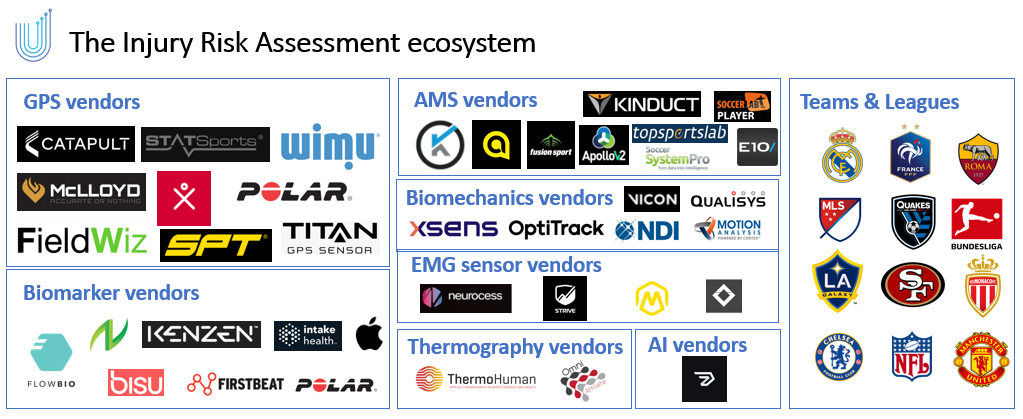
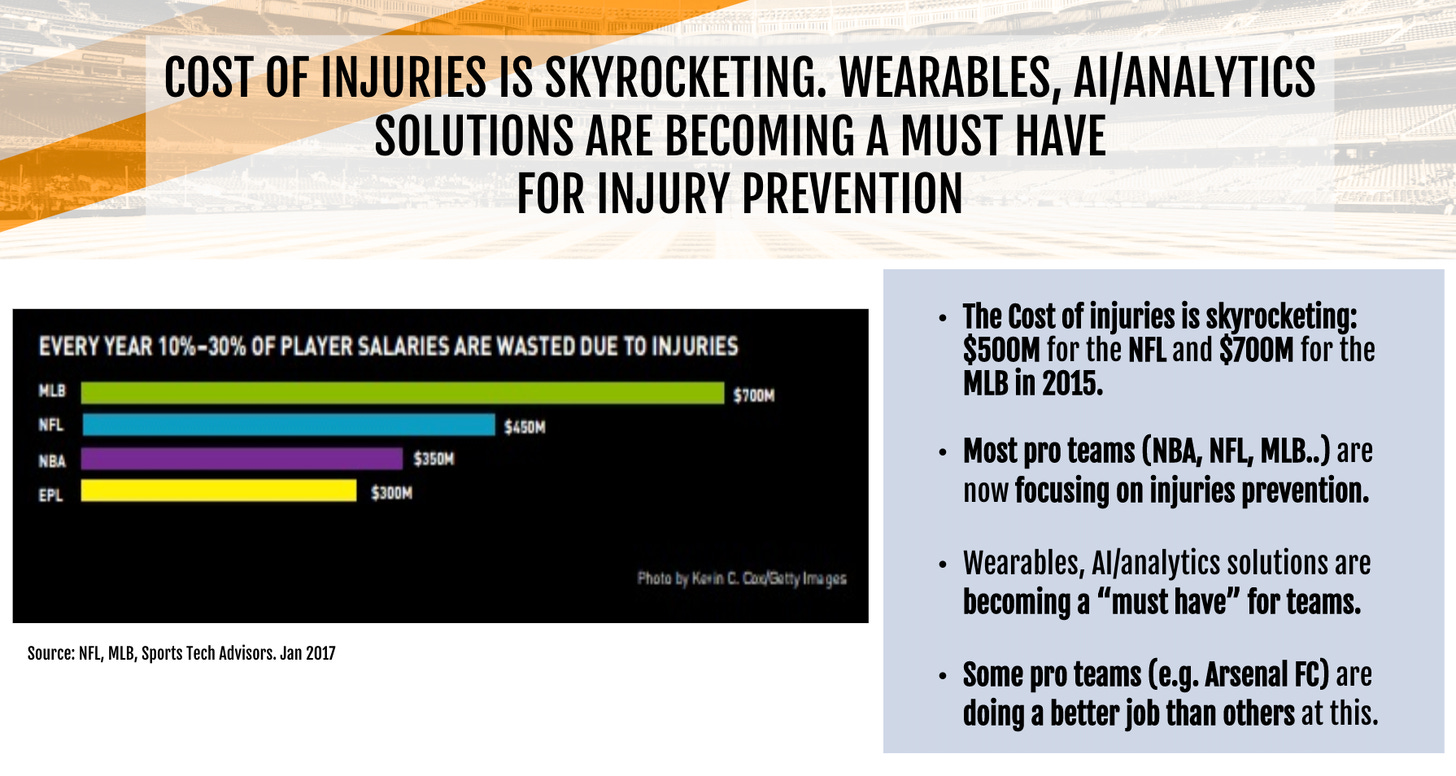
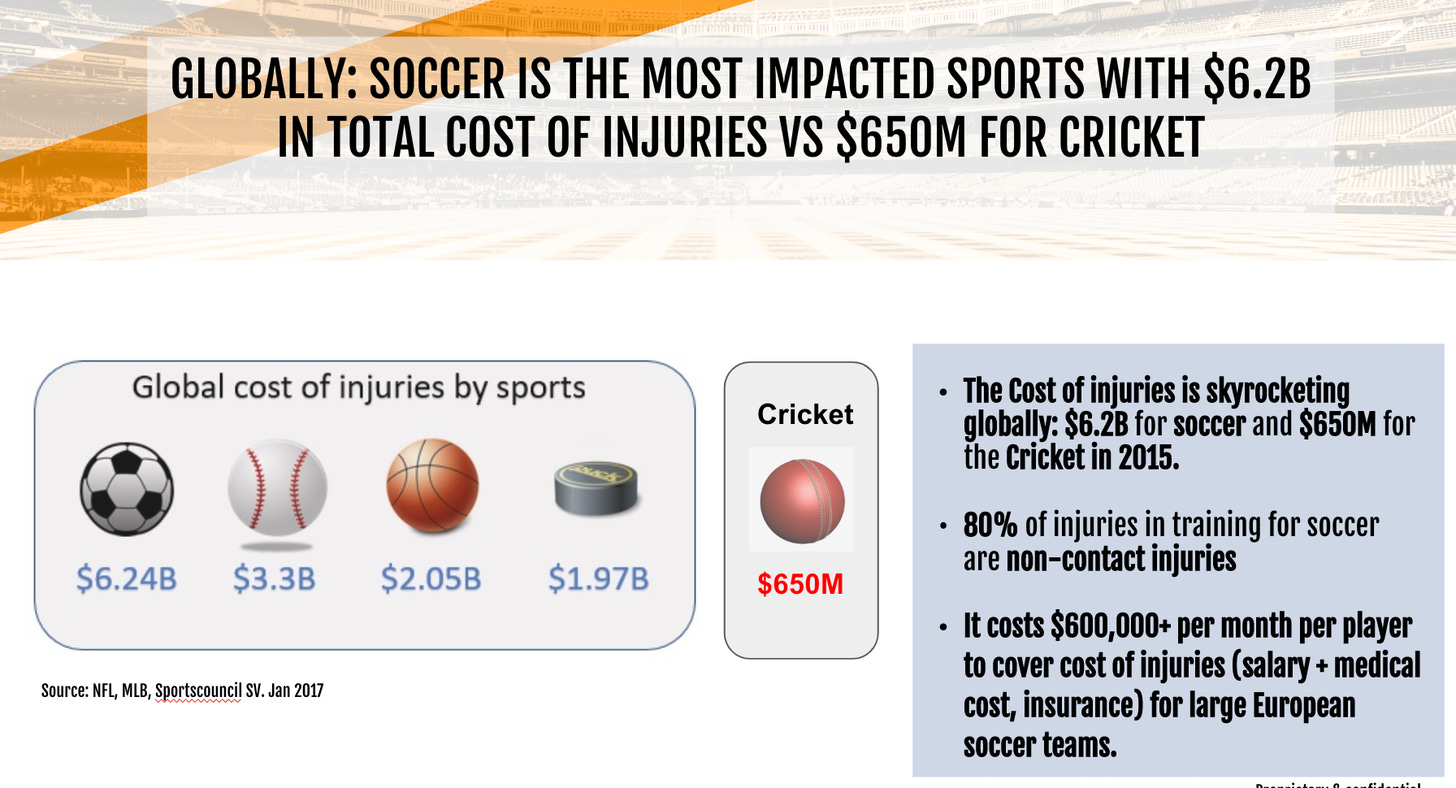

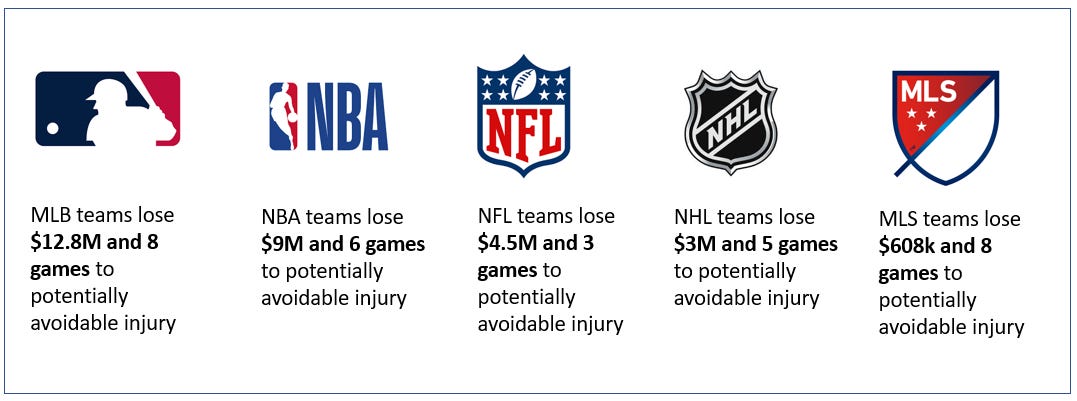
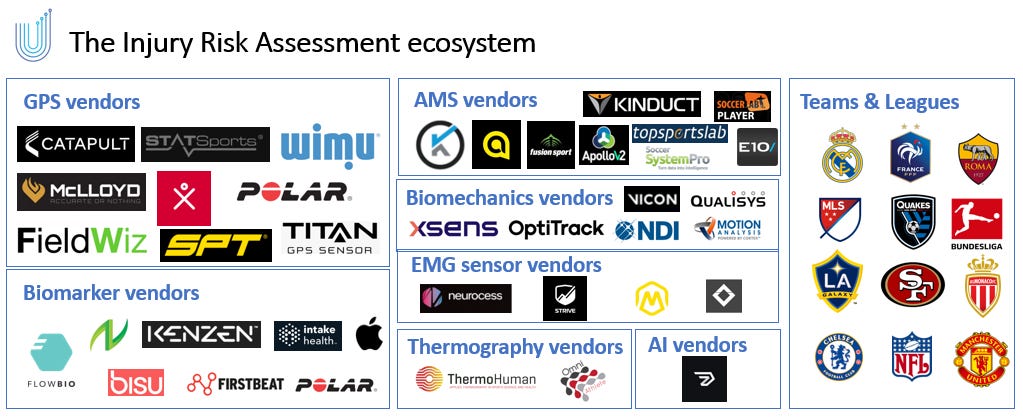



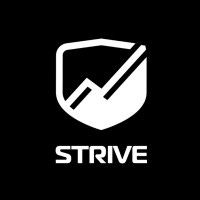



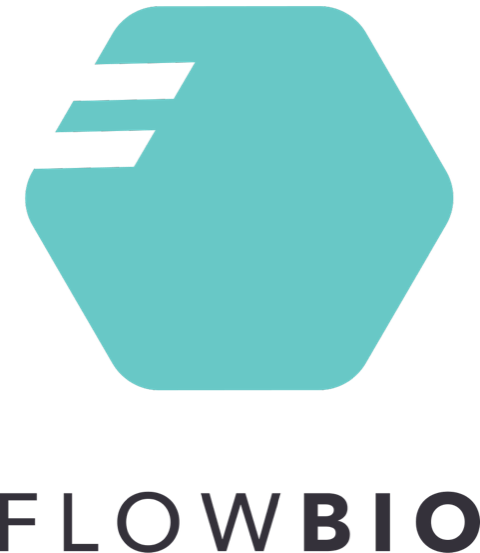


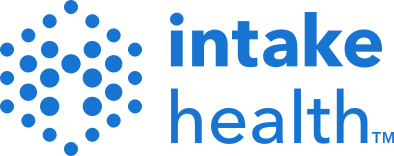
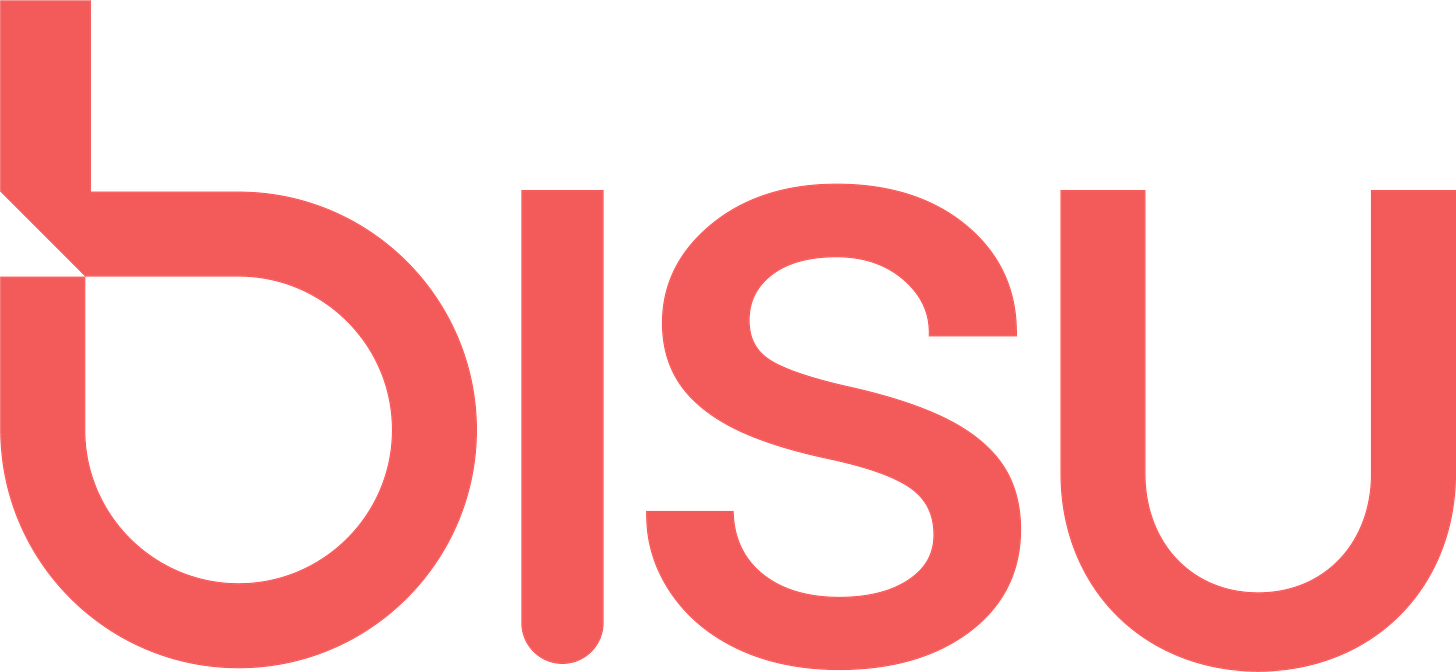






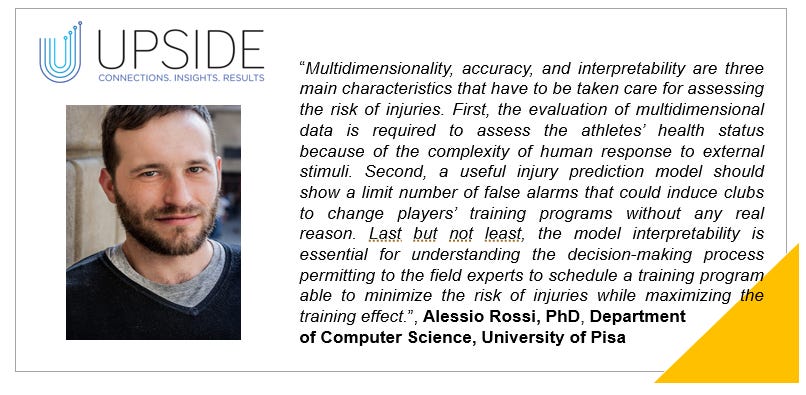
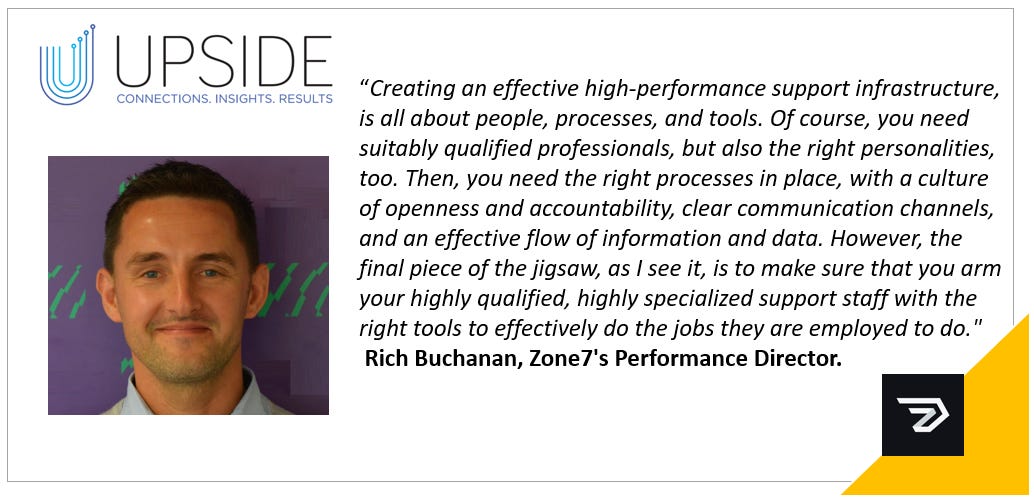
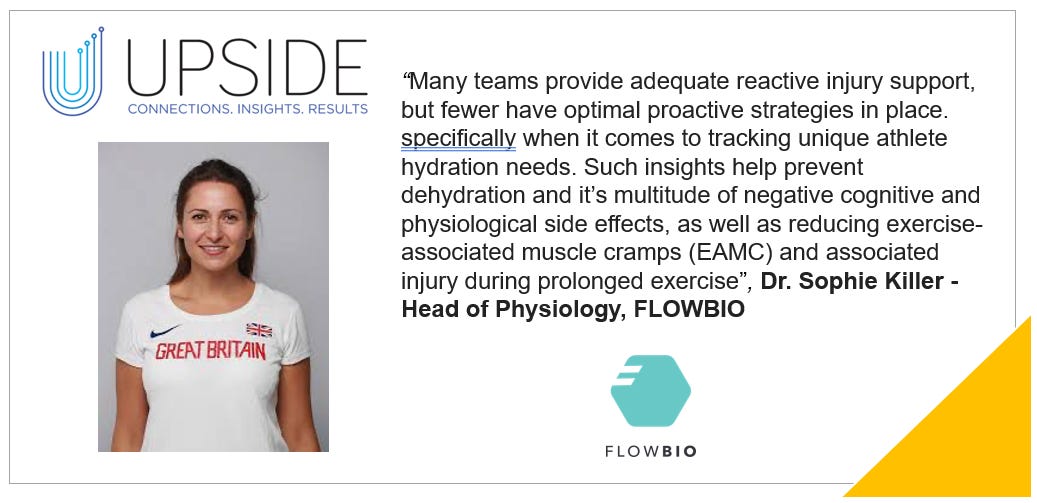

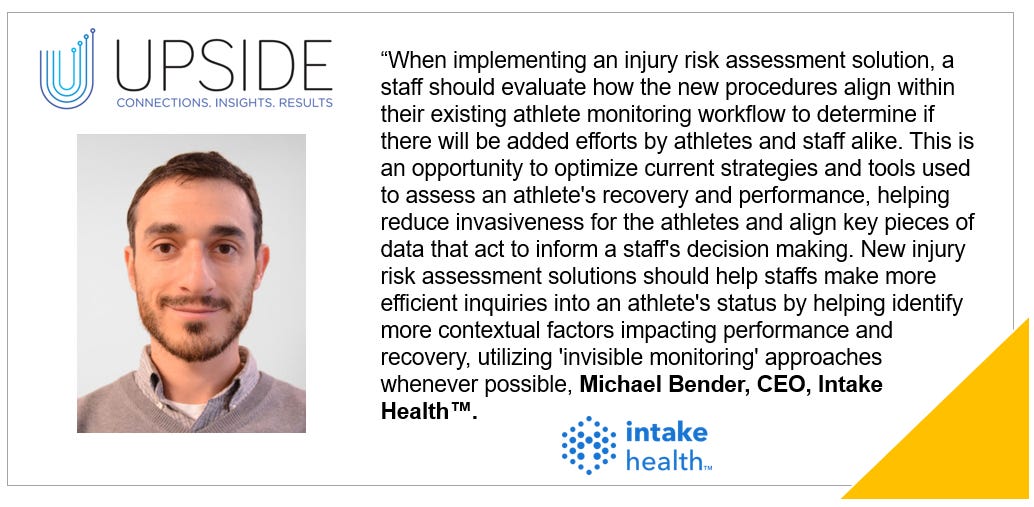
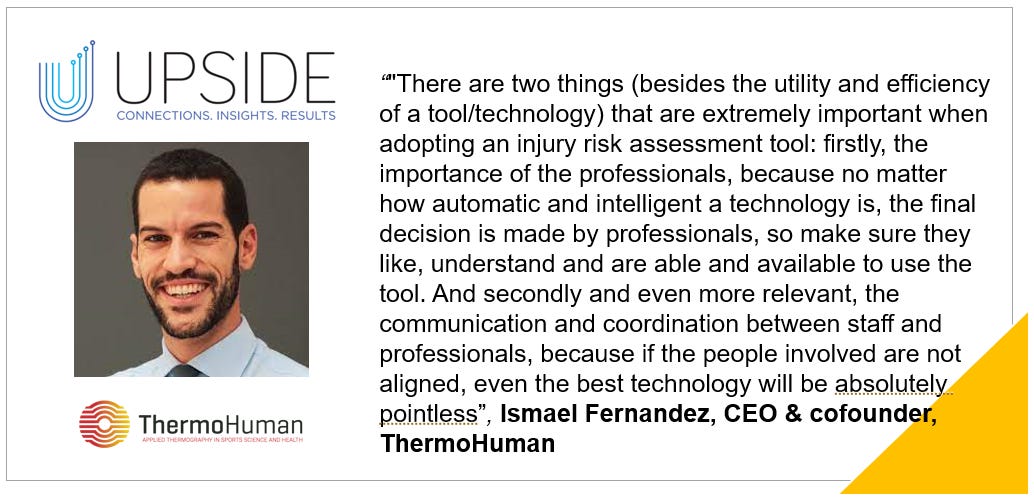
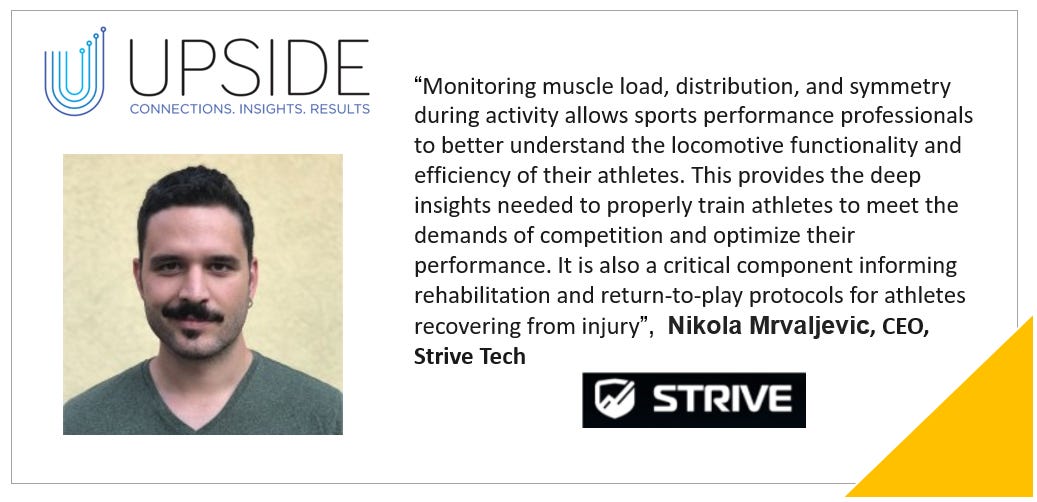
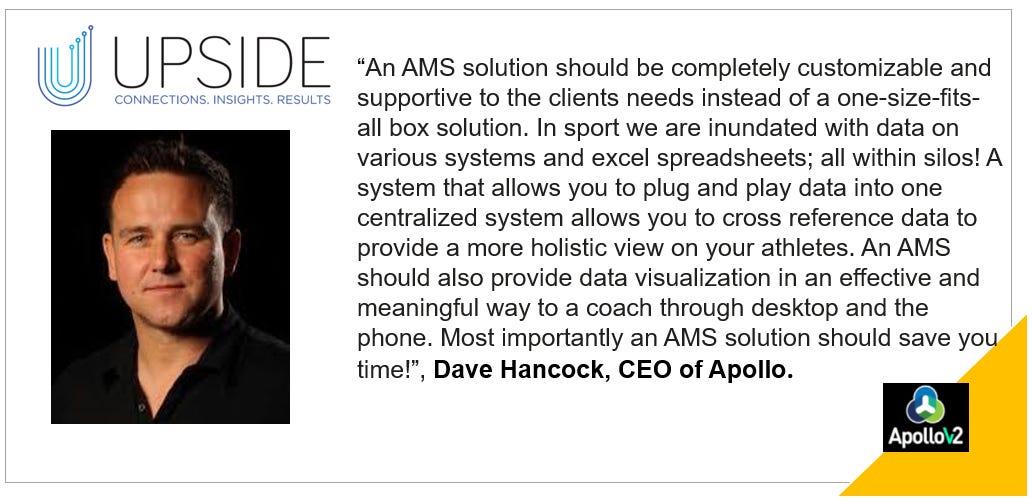

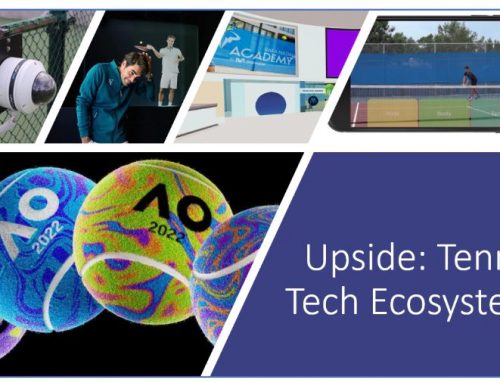

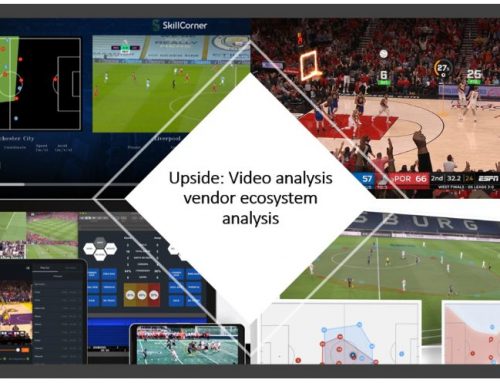
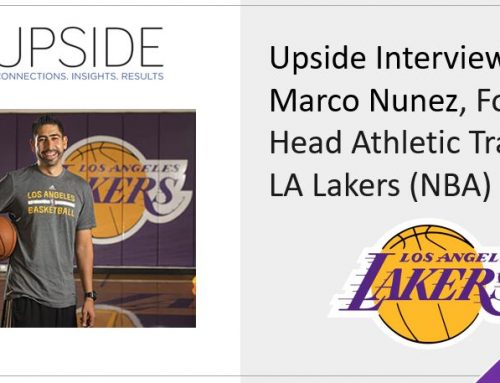
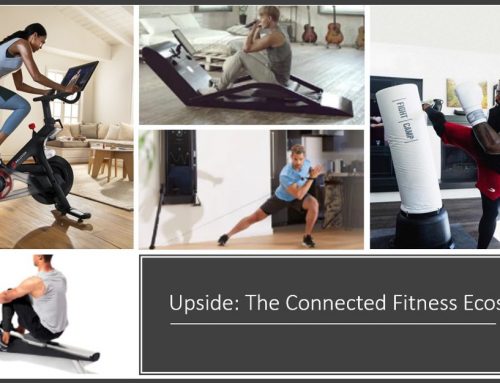

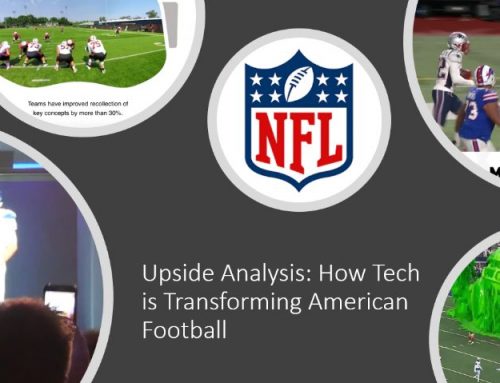
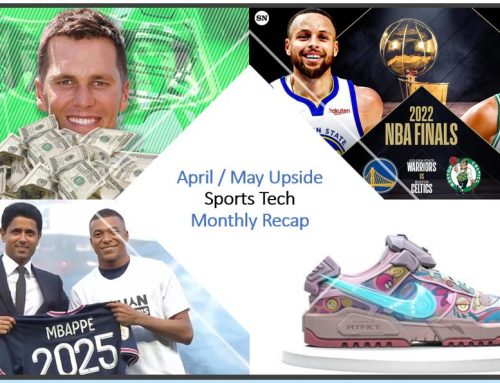
Leave A Comment
You must be logged in to post a comment.